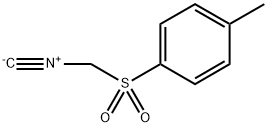LOVAGE OIL
- CAS NO.:8016-31-7
- Molecular Weight: 0
- MDL number: MFCD00240760
- Update Date: 2023-05-25 18:01:06
What is LOVAGE OIL?
Description
See LOVAGE.
Chemical properties
Lovage oils are obtained by steam distillation of either the leaves (leaf oil) or the
fresh roots (root oil) of the perennial plant LevisticumofficinaleW.D.J. Koch (Apiaceae).
Both oils are yellow-greenish-brown to dark brown liquids with strong,
characteristic, aromatic odor and taste.
d2020 1.010–1.090; n20D 1.5350–1.5580; α20D ?1 ° to +5 °; solubility: 1 vol in max.
1.5 vol of 85% ethanol; acid value: max. 2–16; ester value 170–260.
The main constituent of the leaf oil is α-terpinyl acetate, while the main constituent
and odor-determining component of the root oil is ligustilide
(3-butylidene-4,5-dihydrophthalide).
The oils are produced on a relatively small scale, for example, in Hungary, and
are mainly used in the alcoholic beverage industry and for flavoring of tobacco;
small amounts are also used in perfumery.
Chemical properties
Perennial herbaceous plant that grows wild in several areas of
Europe; it is cultivated for extractive purposes in France, Germany,
Hungary, Czechoslovakia, Belgium, The Netherlands, and Yugo slavia. It has large leaves with a cylindrical stem, branched upper
stalks, rhizome-type roots, and yellow-greenish flowers. It grows
to 2 m (7 ft.) in height. The rhizomes and other parts of the plant
are used. Lovage has an intensely persistent, warm, celery-like
flavor and aroma.
The essential oil from the green parts normally is not manufactured
and exhibits less interesting characteristics than the rhizome oil.
Essential oil from rhizomes can be obtained by steam distillation
of fresh or dried rhizomes with yields of 0.1 to 0.2 % or 0.6 to
1.0%, respectively. It is a yellow-amber to greenish liquid exhib iting a strong odor reminiscent of celery and angelica with a sharp,
analogous flavor. The main constituents include d-oc-terpineol
aldehydes, and acids (acetic and isovaleric) .
The derivatives are extract and oleoresin.
Chemical properties
Lovage is an aromatic perennial herbaceous plant that grows wild in several areas of Europe. It is cultivated for extrac tive purposes in France, Germany, Hungary, the Czech Republic, Belgium, the Netherlands and the former Yugoslavia. It has large leaves with a cylindrical stem, branched upper stalks, rhizome-type roots and yellow-greenish flowers arranged in dense clusters (July to August). It grows to 2 m (7 ft) in height. The rhizomes and other parts of the plant are used. Lovage has an intensely persistent, warm, celery-like flavor and aroma.
Chemical properties
The oil from the green parts is normally not manufactured and exhibits less interesting characteristics than the rhizome oil. Essential oil from rhizomes can be obtained by steam distillation of fresh or dried rhizomes with yields of 0.1 to 0.2%, or 0.6 to 1.0%, respectively. It exhibits a strong odor reminiscent of celery and angelica with a sharp, analogous flavor.
Physical properties
It is a greenish-brown to deep-brown liquid. It is soluble in most fixed oils and slightly soluble with opalescence, in mineral oil, but it is relatively insoluble in propylene glycol and glycerin.
Occurrence
Lovage is a perennial found in Europe, the United States, and Canada
The Uses of LOVAGE OIL
lovage oil (Levisticum officinale) is ascribed properties include cleansing, depurative, and draining. In addition, the roots and fruit have aromatic and stimulant activity. Lovage oil is appropriate for use on oily skin. This oil is produced by distillation of the roots, though the leaves and seeds are also used for therapeutic purposes.
Definition
Extractives and their physically modified derivatives. Levisticum officinale, Umbelliferae.
Composition
Lovage contains approximately 2% of a volatile oil responsible for its characteristic odor and flavor. The oil contains primarily phthalide lactones, including 3-butylphthalide, cis- and trans-butyldenephthalide, cis- and trans-ligustilide, sen-kyunolide and angeolide. Several of the compounds found in lovage have also been detected in celery.
Biochem/physiol Actions
Odor at 1.0%
Safety Profile
Moderately toxic by ingestion. A skin irritant. When heated to decomposition it emits acrid smoke and irritating fumes. See also constituents as listed.
Properties of LOVAGE OIL
| Density | 1.036 g/mL at 25 °C(lit.) |
| refractive index | n |
| FEMA | 2650 | LOVAGE EXTRACT (LEVISTICUM OFFICINALE KOCH) |
| Flash point: | 173 °F |
| Odor | at 100.00 %. lovage |
| optical activity | [α]20/D +2°, neat |
| EPA Substance Registry System | Oils, lovage (8016-31-7) |
Safety information for LOVAGE OIL
| Signal word | Warning |
| Pictogram(s) |
 Exclamation Mark Irritant GHS07 |
| GHS Hazard Statements |
H315:Skin corrosion/irritation H319:Serious eye damage/eye irritation |
| Precautionary Statement Codes |
P305+P351+P338:IF IN EYES: Rinse cautiously with water for several minutes. Remove contact lenses, if present and easy to do. Continuerinsing. |
Computed Descriptors for LOVAGE OIL
New Products
4-AMINO-TETRAHYDRO-PYRAN-4-CARBOXYLIC ACID HCL 4-(Dimethylamino)tetrahydro-2H-pyran-4-carbonitrile 4-Aminotetrahydropyran-4-carbonitrile Hydrochloride (R)-3-Aminobutanenitrile Hydrochloride 3-((Dimethylamino)methyl)-5-methylhexan-2-one oxalate 1,4-Dioxa-8-azaspiro[4.5]decane 5-Bromo-2-nitropyridine Nimesulide BP Aceclofenac IP/BP/EP Diclofenac Sodium IP/BP/EP/USP Mefenamic Acid IP/BP/EP/USP Ornidazole IP Diclofenac Potassium THOMAIND PAPER PH 2.0 TO 4.5 1 BOX BUFFER CAPSULE PH 9.2 - 10 CAP SODIUM CHLORIDE 0.1N CVS ALLOXAN MONOHYDRATE 98% PLATINUM 0.5% ON 3 MM ALUMINA PELLETS (TYPE 73) LITHIUM AAS SOLUTION 2-Bromo-1-(bromomethyl)-3-chloro-5-nitrobenzene 2-Bromo-3-nitroaniline N-(3-Hydroxypropyl)-N-methylacetamide 3-Bromo-6-chloropyridazine 4-ethyl-3-nitrobenzoic acidRelated products of tetrahydrofuran








You may like
-
 1-Methyl-6-oxo-1,6-dihydropyridazine-3-carbonitrile 98%View Details
1-Methyl-6-oxo-1,6-dihydropyridazine-3-carbonitrile 98%View Details
99903-60-3 -
 88491-46-7 98%View Details
88491-46-7 98%View Details
88491-46-7 -
 1823368-42-8 98%View Details
1823368-42-8 98%View Details
1823368-42-8 -
 2-(3-(tert-butyl)phenoxy)-2-methylpropanoic acid 1307449-08-6 98%View Details
2-(3-(tert-butyl)phenoxy)-2-methylpropanoic acid 1307449-08-6 98%View Details
1307449-08-6 -
 Ethyl 3-(furan-2-yl)-3-hydroxypropanoate 25408-95-1 98%View Details
Ethyl 3-(furan-2-yl)-3-hydroxypropanoate 25408-95-1 98%View Details
25408-95-1 -
 2-Chloro-5-fluoro-1-methoxy-3-methylbenzene 98%View Details
2-Chloro-5-fluoro-1-methoxy-3-methylbenzene 98%View Details
1805639-70-6 -
 1784294-80-9 98%View Details
1784294-80-9 98%View Details
1784294-80-9 -
 Lithium ClavulanateView Details
Lithium ClavulanateView Details
61177-44-4